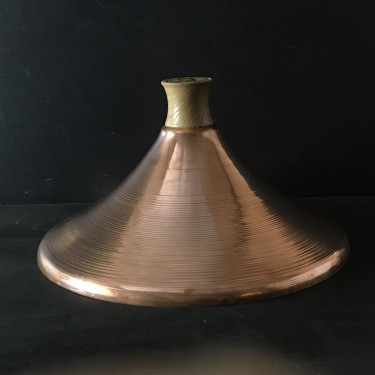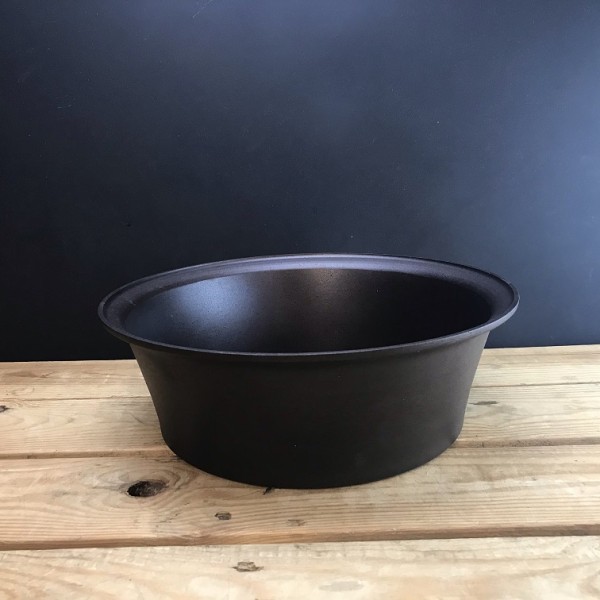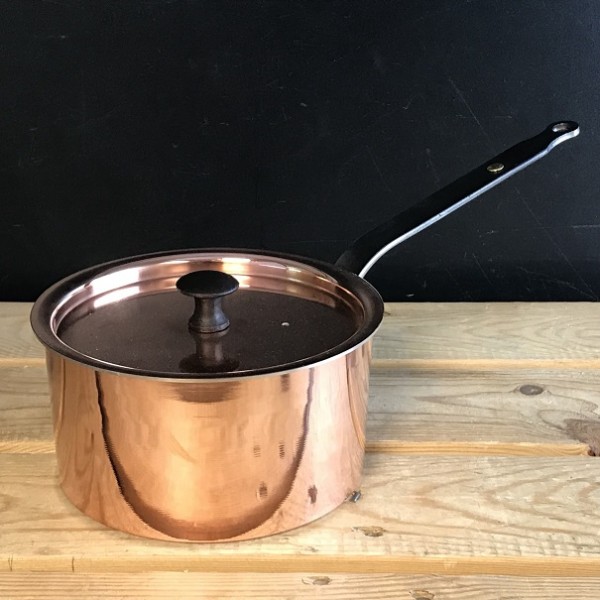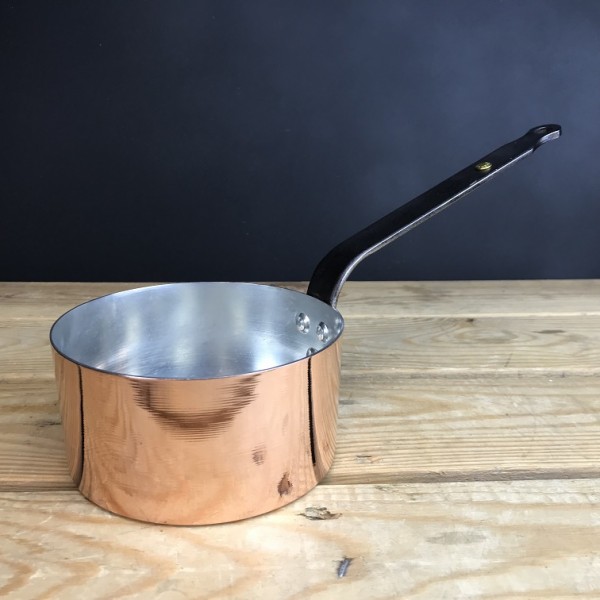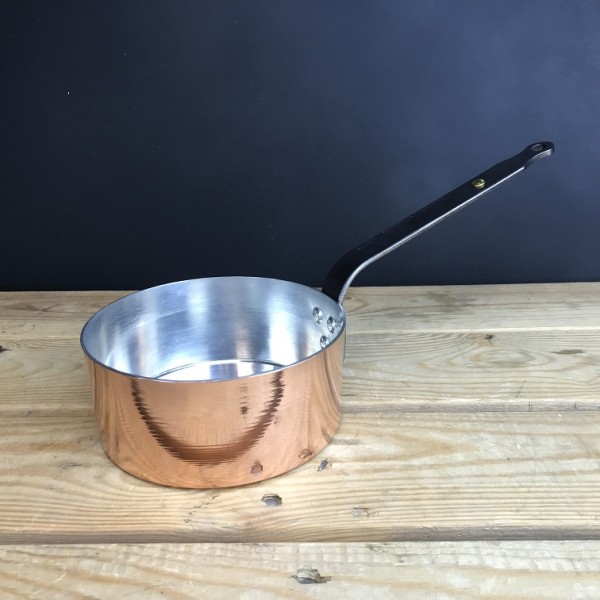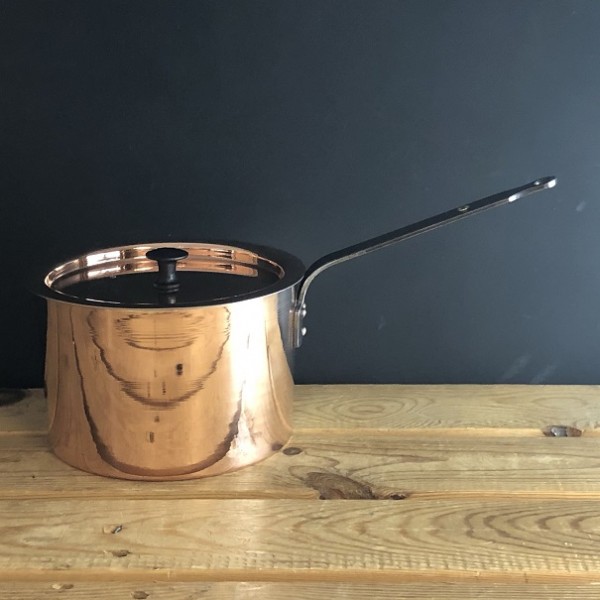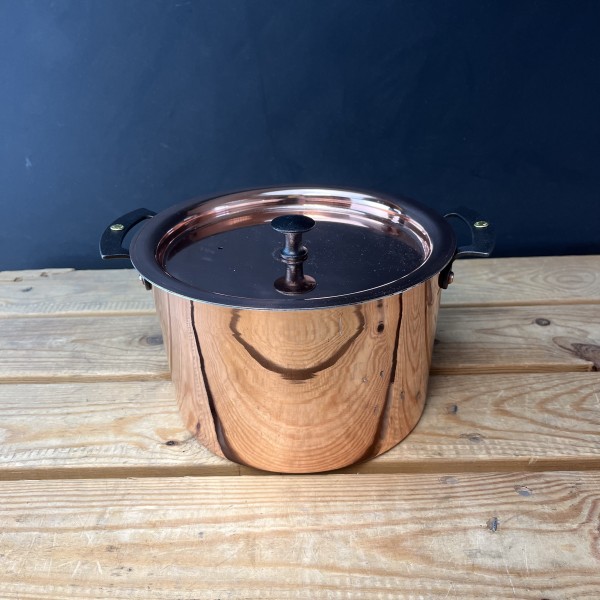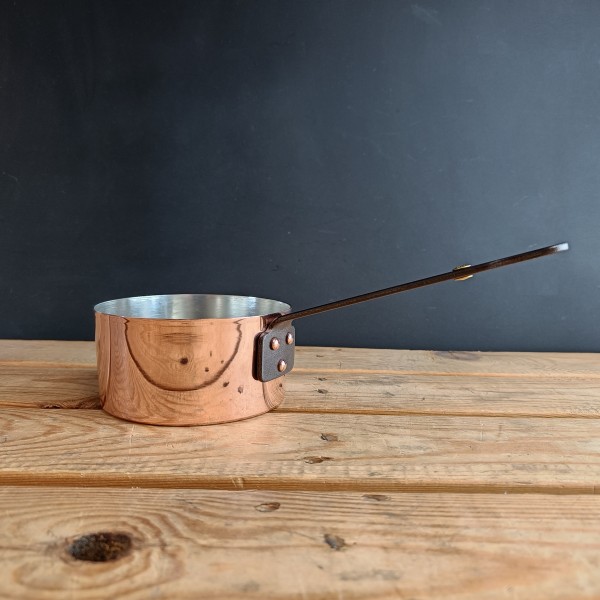Copper tagine lid.
- Brand: Netherton Foundry
- Product Code: NFS-105TLCU
- Availability: In Stock
-
£205.90
- Ex Tax: £171.58
Netherton Foundry copper tagine lid.
Designed to fit the 4 ltr (7 pint) Netherton Foundry spun and cast iron casserole bowls
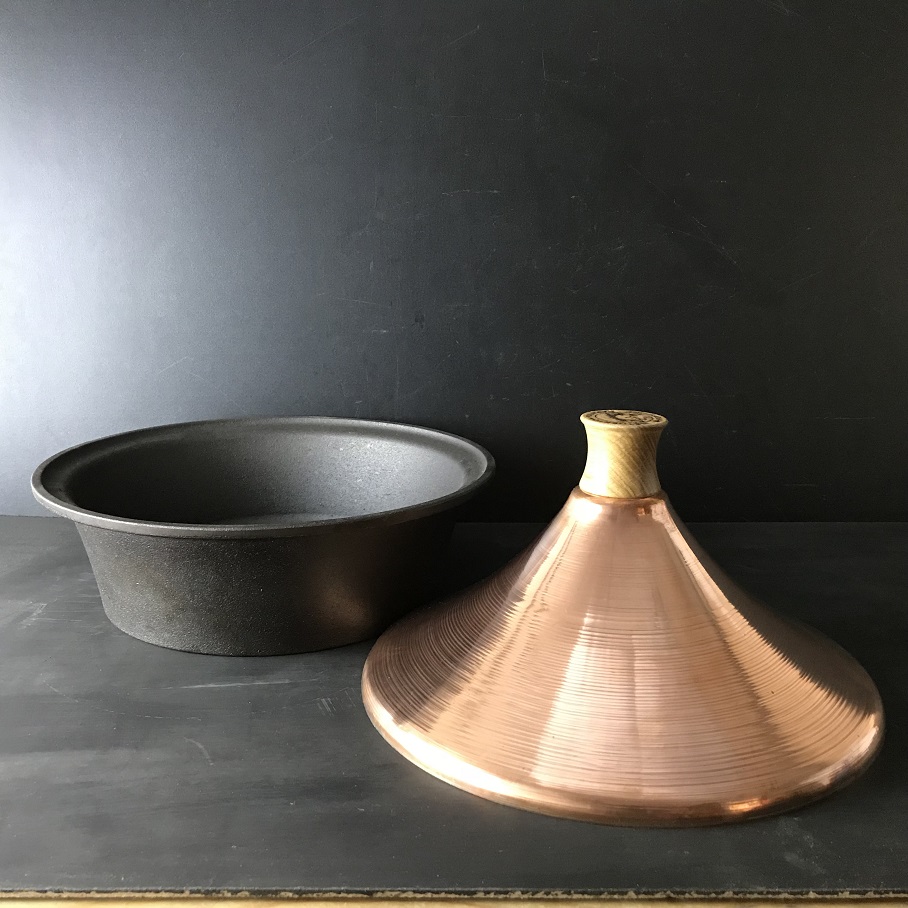
Tagine lid is hand spun by Netherton Foundry from solid copper sheet and hand tinned.
This item may take up to 28 days to despatch. If you need it sooner please telephone or email and we will see if this is possible.
Solid copper tagine lid is hand polished to a soft lustre and has a hand applied traditional tin lining and British oak knob.
Cook authentic and exotic North African dishes
Perfect for kitchen to table service, elegant and impressive.
The tin lining to the tagine lid is food grade approved and is the classic method of protecting the copper tagine from acidic foods and thus preventing flavour tainting.
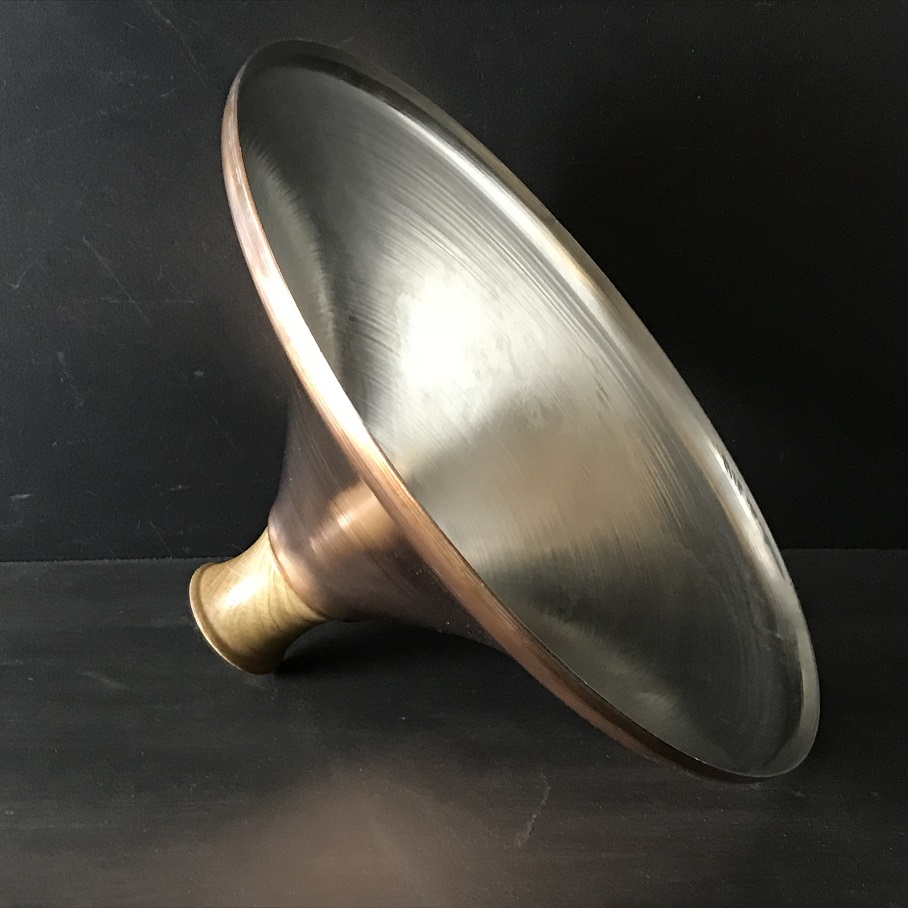
Lid Dimensions:
The tagine dimensions: 11.25inches (29cm) wide at base, 6 inches (15cm) high from base to the top of the knob,
Weight 0.796 kg ( 1lb 12ozs)
Looking after the solid copper tagine with traditional tin lining:
Cleaning: After use, wipe the inside and outside of the copper tagine lid with soapy water and rinse thoroughly; Don’t use an aggressive scourer or you will rapidly wear through the lining and it will require another paid visit to our workshops!
Temperature: Do not leave your pan on the hob unattended for too long, as if you boil it dry, the lining will melt (232º C / 450ºF), and it will require relining.
If you place your pan in an oven (some cooks seal meat on a hob, then finish in an oven), it is best not to go above 180º C / 356 F.
Wear: At home the tin lining should last for years, commercially we see pans every 1-2 years.
The biggest causes of rapid wear are metal spoons and whisks, so please use a wooden or silicon spoons and silicon whisks.
Wear & re-tinning
The tin lining is not covered by the warranty as we cannot predict wear and use. The biggest causes of rapid wear are metal spoons and whisks, so please only use wooden or silicon utensils.
If you wear through or damage the tin-lining you can get this restored by these experts.:
UK and Europe: Thomas Gameson and Sons Ltd, Staffordshire, England, they’ve been doing this for 200 years, Find out more and contact them here.
USA and Canada: Sara Dahmen at House Copper and Cookware, Wisconsin, USA : Find out more and contact her here.
History of tin lined cookware.
The practice of tinning ironware to protect it against rust is an ancient one. This may have been the work of the whitesmith. This was done after the article was fabricated.
The first production of tinplate was probably in Bohemia, from where the trade spread to Saxony, and was well-established there by the 1660s when Andrew Yarranton and Ambrose Crowle, a Stourbridge blacksmith (not far from Highley, the home of Netherton) visited Dresden to find out how it was made. In Saxony the plates were forged, but when they conducted experiments on their return to England, they tried rolling the iron. This led to the ironmasters Philip Foley and Joshua Newborough erecting a new mill in 1670 in Wolverley . By 1678 they were making frying pans.
Today our food grade tin applied to a cleaned and flux coated pan by hand by skilled craftsmen.
If your lid or tagine has an oak knob, the grain on every piece is unique and each one is branded by hand. They are like fingerprints, no two are identical.

Tags: Copper









